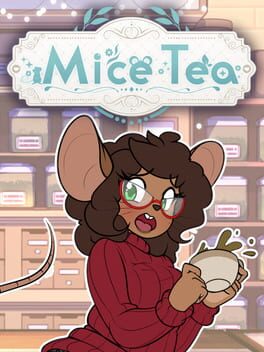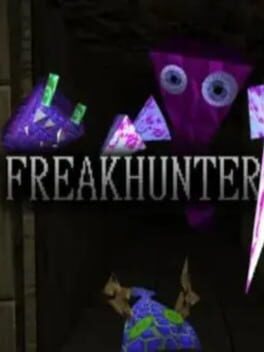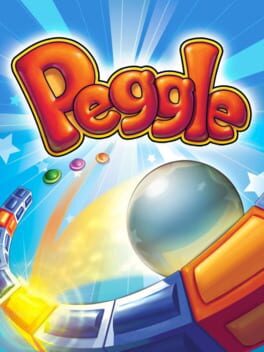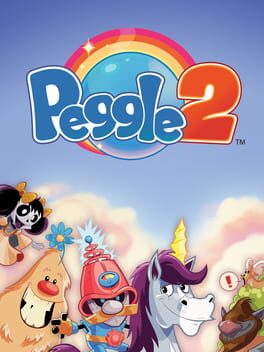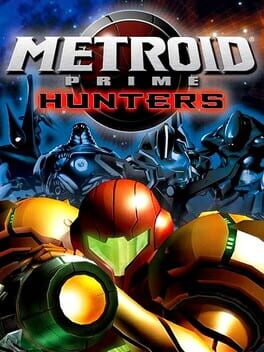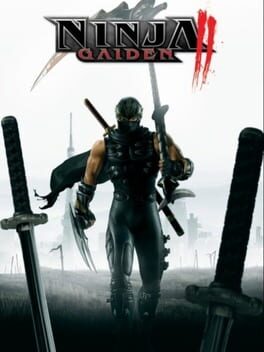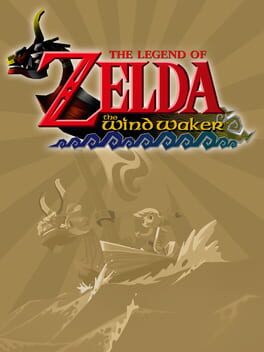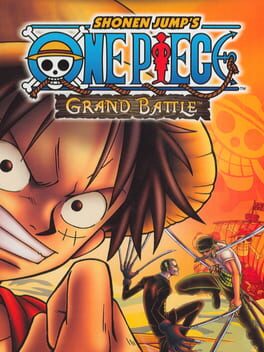21 reviews liked by goop_lord
Black Mesa
2015
What a joke! I cannot comprehend how the developers so clearly have a sincere passion for Half-Life while simultaneously not understanding in the slightest what makes Half-Life what it is.
My disillusionment with the game set in the instant that I got into my first encounter with the HECU, who are so unbelievably obnoxious and focused on trial-and-error that the game stops for 30 minutes at a time every time you encounter them. Of course, this wouldn't be such a bad thing if they weren't the overwhelming majority in terms of enemy placement; once you first encounter a Marine the (genuinely very good) alien-fighting gunplay is sidelined up until you reach the very depths of the Lambda complex.
The HECU (while also obnoxiously and artificially difficult) are representative of Black Mesa's biggest flaw, and the most dire manner in which it fails to recreate what Half-Life is all about: rather than encouraging exploration, innovation and improvisation like every Half-Life game does, you're regulated to kneeling behind cover and using some of the most boring weapons in the game (namely the MP5 and shotgun) as you attempt to pick them off from a distance. Even the flow of using these weapons is neutered when compared to the original game, due to the MP5's magazine capacity, ammunition reserves and grenade stock being reduced to mere fractions of what they were, meaning that you can't even truly indulge in bombast without having to stop and reload or scavenge for ammo every minute or so. This problem also impacts the revolver and crossbow, genuinely fun weapons that lend themselves well to the long-distance based combat of the HECU: you're reduced to a measly three-or-two magazines in reserve for both of them, meaning you can carry a maximum of twenty-four and fifteen rounds apiece for them. I don't know if they were going for realism here or what, but tell me, do you play Half-Life for realistic portrayals of combat?
The gunplay is not alone in being completely representative of Black Mesa's disdain for exploration and player creativity: there are invisible walls and cheap mapping practices everywhere, determined to stomp out Half-Life's signature feeling of "what's up there? I wonder if I can get up there" at every possible corner. Some of my favorite examples were long-jumping off a floating island in Xen to land on one situated below, only to find that the developers had registered all long falls in Xen as falling into a bottomless pit and would force a reload upon landing... and feeling quite clever when I used satchel charges to bypass an explosive maze only to find that the map was designed to blow you up if the explosives blew up regardless of where you were on the map, even if you were well behind cover.
Speaking of Xen...! I don't know, it's beautiful and impressive and perhaps a step up from the original's from a certain perspective, but it's also not really anything we haven't seen before in a million other alien worlds from a million other science fiction stories. The Xen of Half-Life felt genuinely strange, incomprehensible and uncanny in a manner that not only acted in favor of the game's horror elements but also reinforced the notion that you are not welcome here, that this world was never meant for and never intended to pay host to those of your kind. Sure, we're treated to beautiful forests, swamps and factories, but... they're just that, things that I recognize, things that I've seen before, things that are familiar. It takes the alien out of "alien invasion."
Another thing that bothered me was the music. None of it was bad, I'd say, but none of it really felt like Half-Life to me. Half-Life's OST was dominated more than anything by droning guitar feedback, dark ambient soundscapes and industrial rhythms, the prevalence of which makes the heavy synths and pounding drums that much more impactful when they do show up. Not only does the Black Mesa OST sound much more like something you'd hear in a standard fare sci-fi FPS of the 2010s, it was more or less one Epic Videogame Song With Heavy Drum And Guitar And Synth after another - sometimes it worked for the moment (such as We've Got Hostiles, whose almost desert rock-styled riffage fit perfectly for the adrenaline rush of seeing the surface for the first time only amid a massive firefight) but most of the time I mostly either found the loud music irritating when it played during something as innocuous as exploring a reactor facility, or when I had to listen to it again, and again, and again as I reloaded save after save after save in one of the game's million-and-a-half HECU skirmishes.
It's a shame, because as I said in my intro it's clear that these developers love Half-Life. There's a lot of thought put into capturing the idiosyncrasies of 1998's portrayal of Black Mesa while also making them feel more lively and lived-in from a modern point of view. The moment-to-moment combat and "gun feel" is excellent when you're just fighting aliens, and the flow of the levels themselves is quick, breezy and natural... but because it all goes to hell whenever you get to Xen (the only completely original section of Black Mesa) it's clear that we can give credit to the fact that these are painstaking bit-for-bit recreations of Valve's innovations as opposed to something that the team can truly take credit for. Xen literally milks the same puzzle over and over and over again for the entirety of its 8-10 hour playtime, and only really bothers to introduce its trump card (which in fairness is cool as hell) during the last quarter of Interloper.
The Nihilanth fight, though? That shit fuckin' rules. It's just a shame that the game only finally realizes its potential during the literal final moments of the game.
Played on "hard" (eventually got so fed up with the very first tank fight and the Gonarch fight that I set it to normal until I'd killed those), completed in about 28 hours.
My disillusionment with the game set in the instant that I got into my first encounter with the HECU, who are so unbelievably obnoxious and focused on trial-and-error that the game stops for 30 minutes at a time every time you encounter them. Of course, this wouldn't be such a bad thing if they weren't the overwhelming majority in terms of enemy placement; once you first encounter a Marine the (genuinely very good) alien-fighting gunplay is sidelined up until you reach the very depths of the Lambda complex.
The HECU (while also obnoxiously and artificially difficult) are representative of Black Mesa's biggest flaw, and the most dire manner in which it fails to recreate what Half-Life is all about: rather than encouraging exploration, innovation and improvisation like every Half-Life game does, you're regulated to kneeling behind cover and using some of the most boring weapons in the game (namely the MP5 and shotgun) as you attempt to pick them off from a distance. Even the flow of using these weapons is neutered when compared to the original game, due to the MP5's magazine capacity, ammunition reserves and grenade stock being reduced to mere fractions of what they were, meaning that you can't even truly indulge in bombast without having to stop and reload or scavenge for ammo every minute or so. This problem also impacts the revolver and crossbow, genuinely fun weapons that lend themselves well to the long-distance based combat of the HECU: you're reduced to a measly three-or-two magazines in reserve for both of them, meaning you can carry a maximum of twenty-four and fifteen rounds apiece for them. I don't know if they were going for realism here or what, but tell me, do you play Half-Life for realistic portrayals of combat?
The gunplay is not alone in being completely representative of Black Mesa's disdain for exploration and player creativity: there are invisible walls and cheap mapping practices everywhere, determined to stomp out Half-Life's signature feeling of "what's up there? I wonder if I can get up there" at every possible corner. Some of my favorite examples were long-jumping off a floating island in Xen to land on one situated below, only to find that the developers had registered all long falls in Xen as falling into a bottomless pit and would force a reload upon landing... and feeling quite clever when I used satchel charges to bypass an explosive maze only to find that the map was designed to blow you up if the explosives blew up regardless of where you were on the map, even if you were well behind cover.
Speaking of Xen...! I don't know, it's beautiful and impressive and perhaps a step up from the original's from a certain perspective, but it's also not really anything we haven't seen before in a million other alien worlds from a million other science fiction stories. The Xen of Half-Life felt genuinely strange, incomprehensible and uncanny in a manner that not only acted in favor of the game's horror elements but also reinforced the notion that you are not welcome here, that this world was never meant for and never intended to pay host to those of your kind. Sure, we're treated to beautiful forests, swamps and factories, but... they're just that, things that I recognize, things that I've seen before, things that are familiar. It takes the alien out of "alien invasion."
Another thing that bothered me was the music. None of it was bad, I'd say, but none of it really felt like Half-Life to me. Half-Life's OST was dominated more than anything by droning guitar feedback, dark ambient soundscapes and industrial rhythms, the prevalence of which makes the heavy synths and pounding drums that much more impactful when they do show up. Not only does the Black Mesa OST sound much more like something you'd hear in a standard fare sci-fi FPS of the 2010s, it was more or less one Epic Videogame Song With Heavy Drum And Guitar And Synth after another - sometimes it worked for the moment (such as We've Got Hostiles, whose almost desert rock-styled riffage fit perfectly for the adrenaline rush of seeing the surface for the first time only amid a massive firefight) but most of the time I mostly either found the loud music irritating when it played during something as innocuous as exploring a reactor facility, or when I had to listen to it again, and again, and again as I reloaded save after save after save in one of the game's million-and-a-half HECU skirmishes.
It's a shame, because as I said in my intro it's clear that these developers love Half-Life. There's a lot of thought put into capturing the idiosyncrasies of 1998's portrayal of Black Mesa while also making them feel more lively and lived-in from a modern point of view. The moment-to-moment combat and "gun feel" is excellent when you're just fighting aliens, and the flow of the levels themselves is quick, breezy and natural... but because it all goes to hell whenever you get to Xen (the only completely original section of Black Mesa) it's clear that we can give credit to the fact that these are painstaking bit-for-bit recreations of Valve's innovations as opposed to something that the team can truly take credit for. Xen literally milks the same puzzle over and over and over again for the entirety of its 8-10 hour playtime, and only really bothers to introduce its trump card (which in fairness is cool as hell) during the last quarter of Interloper.
The Nihilanth fight, though? That shit fuckin' rules. It's just a shame that the game only finally realizes its potential during the literal final moments of the game.
Played on "hard" (eventually got so fed up with the very first tank fight and the Gonarch fight that I set it to normal until I'd killed those), completed in about 28 hours.
Black Mesa
2015
Lowering the bar.
Black Mesa is a fan remake-cum-reimagining of Half-Life, and it shows. It’s a very technically impressive game, extracting just about everything it can possibly wring out of the damp towel that is the Source engine. It’s a fairly well-designed game, by virtue of most of its elements being copied over wholesale from the original Half-Life. It’s obviously made by people who are very, very passionate about Valve’s work. But Black Mesa forgets, omits, or changes enough of what worked before that it ultimately commits the mortal and unforgivable sin of making Half-Life kind of boring, a crime for which it must be punished by making it boil upside-down beneath the lake of ice for all eternity.
I like Half-Life a lot. I hardly love playing Half-Life, but it’s a game that I both enjoy and respect, which is a sadly uncommon combination. I’ve never existed in a world without Half-Life, a statement which I’m hoping will make some of you wither into dust, and that makes it a bit difficult to personally gauge the impact it had. Obviously, there are hundreds upon hundreds of reports detailing exactly what made Half-Life so special. There are articles and videos and commentary tracks all recounting all of the little quirks and nuances that later shooters silently adopted because it was what they were expected to do now. I can appreciate it from a sort-of dispassionate, outside perspective; as far as I can tell, shooters before Half-Life were mostly just copying Doom’s homework, for better and for worse. If nothing else, you can absolutely tell that a big shift to a more cinematic style was emerging with Half-Life — again, for better and for worse.
Regardless of the finer details, Half-Life is now a very old game. Twenty-five years old, in fact. And the neat thing about games that get that old is that it inherently primes people for a remake. “The gameplay needs an update”, “the graphics look bad”, “fix Xen”, the masses say. It’s a mentality you have for toys. Make it shiny, make it new, make it talk when you pull the string on its back, make sure you add lens flares and ray tracing. It’s certainly nothing that Half-Life needs. Half-Life is already an incredibly solid game that had a fierce impact on the industry and near single-handedly made Valve the monolith that it is today. To suggest that Half-Life — just about any game, really — needs a remake is to fundamentally assign this toy mentality to art.
But, hell, a remake could still be cool.
I like Half-Life, and Crowbar Collective likes Half-Life, and a lot of other people all really like Half-Life. Besides, the game has already been made for them. If all they’re doing is porting it from GoldSrc to Source, what’s the worst that could happen?
We ultimately don’t know the worst case scenario, because it never came to pass. We do, however, know of a pretty rough scenario, which is Black Mesa releasing in the state that it’s in.
The initial few levels are actually very impressive, largely because of how close they play to the original. The tram ride is there, the resonance cascade is there, the brutal ammo restrictions and tight corridors filled with headcrabs and zombies are still there. Hell, even your first encounters with the aliens are tense and unforgiving, encouraging you to use flares to light enemies on fire in order to conserve your ammo. It’s neat! All the way from the start of Anomalous Materials to the end of Office Complex, Black Mesa feels remarkably like Half-Life fully realized. It’s all shiny and pretty, you’ve got some mechanics to play with that were originally intended but didn’t make it to the final release, and it’s a very enjoyable time. You can even forgive Crowbar Collective for getting rid of the scientist who dives through the window and says “greetings”.
And then We’ve Got Hostiles starts.
The HECU still look like they’re holding MP5s and pistols, but they’re secretly wielding Freeman-seeking laser beams. There’s no longer an ounce of hesitation on their part; if they see a hair on your head poking out from cover, they’re shooting you, and you’re taking damage. They’re like Blood cultists in body armor. Also in keeping with pre-Half-Life design decisions, their AI has been drastically dumbed down. The HECU will still at least try to flank you, but they no longer seem all that interested in the concept of their own survival. They’ll rush you down open corridors with no cover, seemingly only interested in getting as in your face as they possibly can, regardless of whether they’re holding an SMG or a shotgun. Throwing a grenade at their feet will make them loudly announce that there’s a nearby grenade, but they don’t ever seem to actually try getting away from it. They’ll do the little Source Engine shuffle that the Combine like to do — if you’ve played enough Half-Life 2, you know exactly what I’m referring to — and then blow up. This is in obvious and stark contrast to the HECU in Half-Life who, while hardly all the avatars of John Rambo, at least seemed like they weren’t showing up just to die. Combat in Black Mesa against the Marines largely just boils down to you and a grunt sprinting at one another with the fire button held down and you winning the war of attrition by virtue of being the only guy here with power armor. Compared to the earlier, more impactful Black Mesa fights against Vortigaunts and houndeyes, this is a letdown; compared to the HECU in the original, it’s shocking.
Given how frequently you enter skirmishes with the Marines, it's something you really can't ever get away from for the overwhelming majority of the game. Crowbar Collective mentioned that their goal was to "make combat more intense", and it seems as though they've tried to do that simply by flooding rooms with significantly more enemies. By my count, Half-Life's We've Got Hostiles pits you against 21 HECU; Black Mesa sends out 32. It doesn't sound like much, and it isn't at first, but it starts to add up fast. Someone on Reddit actually went through and counted every single on-screen HECU kill, and it comes out to over 550 in Black Mesa compared to Half-Life's 250. When you also take into consideration the fact that pre-Xen levels are condensed compared to the original (with On A Rail being noticeably cut way down), the enemy density is completely out of control.
It's not just that there are more of them now, either. The HECU take roughly the same amount of bullets to put down (about 60 health in Black Mesa relative to the original 80), and your ammo is even tighter than it used to be. Being able to carry 250 SMG bullets with ten grenade rounds on the alt-fire was a bit too freeing and a bit too fun, so now you're hard-capped at 150 SMG bullets and three grenade rounds. The pistol now only holds 150 rounds, instead of 250. The shotgun now holds 64 shells instead of 125. The enemy AI is somehow stupider than the one from twenty-five years ago, so it's not like the game has been made any more difficult now that Gordon's got the HEV suit without pockets; holding the MP5 at head height and clicking from a distance seems to do most of the work for you, and the HECU drop about as much SMG ammo as it takes to kill them. The optimal strategy, it seems, is to just hang back and fish for damage multiplier headshots with the MP5 and then go to the next slaughtermap room to continue the process for the next seven hours until Xen.
While Half-Life's Xen was the end product of tightening deadlines and dwindling budgets, Black Mesa's Xen exists almost as a complete refutation of the original's design circumstances; it very obviously got an overwhelming amount of development time and assets and takes up nearly a third of the new game, whereas the previous Xen was over and done with in about twenty minutes. I think Xen is where Black Mesa most obviously becomes a fan game, because it's clear that nobody in charge ever felt the need to say "no" to anything. It's incredibly long, packed to the gills with scripted setpieces and references to later Half-Life titles, and it keeps using the same wire connecting puzzles and conveyor belt rides over and over again in the hopes that making Xen longer will make Xen better. There's a section here in Interloper where you have to bounce off of one of three spring platforms to kill a Controller, and then that opens a path for you to destroy a fleshy glob maintaining a force field. You would think that the fact that this is split into three very distinct paths would mean that you would thus have three very distinct encounters, but they all play almost identically to one another. All three of them are circular rooms with a Controller floating around, and you break his crystals in order to make him vulnerable to your attacks. It isn't a difficult fight, and it isn't a complicated puzzle, and ultimately just winds up being the exact same thing three times in a row. This happens constantly throughout Interloper, which mostly consists of you sprinting down long conveyor belts and then jumping off of them onto other conveyor belts for about two straight hours.
What burns me most about Black Mesa's Xen, however, is that the entire borderworld has had the personality sucked straight out of it. Xen used to be a Giger-esque hellscape, all bone and speckled carapace. A lot of the level geometry textures were taken straight from reference photos of insects, and it did a great job selling Xen as something of a hive; lots of gross, fleshy, chitinous pockets carved into the walls, pale white and red moving parts that are clearly both artificial and organic. It makes sense, contextually, because the Nihilanth is itself a hybrid of flesh and metal, and the home that it's made of Xen is reflected in its design. Black Mesa's Xen, in its deepest parts, is way more heavy on the machinery angle than the organic one. Through the thick, red haze, it's hard to tell what you're even looking at. The glowing blue lights leading you by the nose sit next to what are very clearly just steel girders and pistons, which is immensely boring when you compare it to the almost-living Xen from two and a half decades ago.
Old Xen's inspirations were obvious, but it still managed to carve an identity out of them. Black Mesa's Xen, on the other hand, looks like fucking everything else.
I want you to look at these two pictures and tell me that they don't look like they were from the same game. I want you to look at this screenshot and tell me that you can't picture the SSV Normandy flying straight through it. I want you to look at this image and tell me that it doesn't look like a Destiny raid map. Whatever identity Xen once had is gone, stripped bare to make it completely indistinct from any photobashed ArtStation "outer space" drawing to be used for padding out a portfolio and nothing else. Originality is both overrated and unimportant, but when you throw out something neat in favor of something bland, I'm going to be hard on it. Gordon Freeman crawls grunting to his feet after going through the Lambda Core teleporter and walks through blue bio-luminescent plants until he sees the Eye of Sauron looking down on him and a woman starts singing over baby's first synthwave.
On that note, Black Mesa has entered itself into the club of Media that Needs to Shut the Fuck Up, given how it starts playing some pretty mediocre tunes from the word go and never ever stops. Music is playing constantly throughout the game, never giving you a single quiet moment or a chance to drink in the layered soundscapes, and it hardly even has the decency to be good most of the time. For every decent pull that fits the action, there are two tracks that clash so hard that they spoil the scene they're in. Blast Pit 3 plays during the sequence in Blast Pit where you have to sneak past the tentacles back up through the missile silo. The incredibly loud, chugging guitars that lead into the How to Compose Dramatic Music For Film tinkling piano keys don't fit the sequence at all. Again and again, these amateurish tracks keep leaching into the game like pesticides into groundwater. The intro to Lambda Core where you uneventfully ride a freight elevator for two minutes is punctuated by steel drums and pounding synths in a moment that should be quiet and introspective; Blast Pit 1 legitimately sounds like a recording of somebody warming up before their actual performance; every single track on Xen inevitably leads into the exact same fucking ethereal female vocals "ooh"ing and "aah"ing over the instrumentation. It wasn't enough for Xen to look like everything else on the market, so all of its songs sound identical to one another, too. It's rough. It's so clearly a collection of just about every thought the composer has ever had in the past two decades, all strung together end to end without much of any consideration as to when it ought to be playing or what ought to even make it into the final game. I can't remember the last time that a game's music annoyed me this much.
Peel away the layers and poke your fingers through the flesh, and Half-Life is still at the core of Black Mesa. Enough of it is still present that playing Black Mesa isn't a completely miserable experience. All it managed to make me feel, however, was that I'd rather just be playing the original instead. Black Mesa can't manage to be anything more than a slipshod imitation of Half-Life, and the moments that it does well are the moments that Valve already did better twenty-five years ago.
Xen was never bad.
Black Mesa is a fan remake-cum-reimagining of Half-Life, and it shows. It’s a very technically impressive game, extracting just about everything it can possibly wring out of the damp towel that is the Source engine. It’s a fairly well-designed game, by virtue of most of its elements being copied over wholesale from the original Half-Life. It’s obviously made by people who are very, very passionate about Valve’s work. But Black Mesa forgets, omits, or changes enough of what worked before that it ultimately commits the mortal and unforgivable sin of making Half-Life kind of boring, a crime for which it must be punished by making it boil upside-down beneath the lake of ice for all eternity.
I like Half-Life a lot. I hardly love playing Half-Life, but it’s a game that I both enjoy and respect, which is a sadly uncommon combination. I’ve never existed in a world without Half-Life, a statement which I’m hoping will make some of you wither into dust, and that makes it a bit difficult to personally gauge the impact it had. Obviously, there are hundreds upon hundreds of reports detailing exactly what made Half-Life so special. There are articles and videos and commentary tracks all recounting all of the little quirks and nuances that later shooters silently adopted because it was what they were expected to do now. I can appreciate it from a sort-of dispassionate, outside perspective; as far as I can tell, shooters before Half-Life were mostly just copying Doom’s homework, for better and for worse. If nothing else, you can absolutely tell that a big shift to a more cinematic style was emerging with Half-Life — again, for better and for worse.
Regardless of the finer details, Half-Life is now a very old game. Twenty-five years old, in fact. And the neat thing about games that get that old is that it inherently primes people for a remake. “The gameplay needs an update”, “the graphics look bad”, “fix Xen”, the masses say. It’s a mentality you have for toys. Make it shiny, make it new, make it talk when you pull the string on its back, make sure you add lens flares and ray tracing. It’s certainly nothing that Half-Life needs. Half-Life is already an incredibly solid game that had a fierce impact on the industry and near single-handedly made Valve the monolith that it is today. To suggest that Half-Life — just about any game, really — needs a remake is to fundamentally assign this toy mentality to art.
But, hell, a remake could still be cool.
I like Half-Life, and Crowbar Collective likes Half-Life, and a lot of other people all really like Half-Life. Besides, the game has already been made for them. If all they’re doing is porting it from GoldSrc to Source, what’s the worst that could happen?
We ultimately don’t know the worst case scenario, because it never came to pass. We do, however, know of a pretty rough scenario, which is Black Mesa releasing in the state that it’s in.
The initial few levels are actually very impressive, largely because of how close they play to the original. The tram ride is there, the resonance cascade is there, the brutal ammo restrictions and tight corridors filled with headcrabs and zombies are still there. Hell, even your first encounters with the aliens are tense and unforgiving, encouraging you to use flares to light enemies on fire in order to conserve your ammo. It’s neat! All the way from the start of Anomalous Materials to the end of Office Complex, Black Mesa feels remarkably like Half-Life fully realized. It’s all shiny and pretty, you’ve got some mechanics to play with that were originally intended but didn’t make it to the final release, and it’s a very enjoyable time. You can even forgive Crowbar Collective for getting rid of the scientist who dives through the window and says “greetings”.
And then We’ve Got Hostiles starts.
The HECU still look like they’re holding MP5s and pistols, but they’re secretly wielding Freeman-seeking laser beams. There’s no longer an ounce of hesitation on their part; if they see a hair on your head poking out from cover, they’re shooting you, and you’re taking damage. They’re like Blood cultists in body armor. Also in keeping with pre-Half-Life design decisions, their AI has been drastically dumbed down. The HECU will still at least try to flank you, but they no longer seem all that interested in the concept of their own survival. They’ll rush you down open corridors with no cover, seemingly only interested in getting as in your face as they possibly can, regardless of whether they’re holding an SMG or a shotgun. Throwing a grenade at their feet will make them loudly announce that there’s a nearby grenade, but they don’t ever seem to actually try getting away from it. They’ll do the little Source Engine shuffle that the Combine like to do — if you’ve played enough Half-Life 2, you know exactly what I’m referring to — and then blow up. This is in obvious and stark contrast to the HECU in Half-Life who, while hardly all the avatars of John Rambo, at least seemed like they weren’t showing up just to die. Combat in Black Mesa against the Marines largely just boils down to you and a grunt sprinting at one another with the fire button held down and you winning the war of attrition by virtue of being the only guy here with power armor. Compared to the earlier, more impactful Black Mesa fights against Vortigaunts and houndeyes, this is a letdown; compared to the HECU in the original, it’s shocking.
Given how frequently you enter skirmishes with the Marines, it's something you really can't ever get away from for the overwhelming majority of the game. Crowbar Collective mentioned that their goal was to "make combat more intense", and it seems as though they've tried to do that simply by flooding rooms with significantly more enemies. By my count, Half-Life's We've Got Hostiles pits you against 21 HECU; Black Mesa sends out 32. It doesn't sound like much, and it isn't at first, but it starts to add up fast. Someone on Reddit actually went through and counted every single on-screen HECU kill, and it comes out to over 550 in Black Mesa compared to Half-Life's 250. When you also take into consideration the fact that pre-Xen levels are condensed compared to the original (with On A Rail being noticeably cut way down), the enemy density is completely out of control.
It's not just that there are more of them now, either. The HECU take roughly the same amount of bullets to put down (about 60 health in Black Mesa relative to the original 80), and your ammo is even tighter than it used to be. Being able to carry 250 SMG bullets with ten grenade rounds on the alt-fire was a bit too freeing and a bit too fun, so now you're hard-capped at 150 SMG bullets and three grenade rounds. The pistol now only holds 150 rounds, instead of 250. The shotgun now holds 64 shells instead of 125. The enemy AI is somehow stupider than the one from twenty-five years ago, so it's not like the game has been made any more difficult now that Gordon's got the HEV suit without pockets; holding the MP5 at head height and clicking from a distance seems to do most of the work for you, and the HECU drop about as much SMG ammo as it takes to kill them. The optimal strategy, it seems, is to just hang back and fish for damage multiplier headshots with the MP5 and then go to the next slaughtermap room to continue the process for the next seven hours until Xen.
While Half-Life's Xen was the end product of tightening deadlines and dwindling budgets, Black Mesa's Xen exists almost as a complete refutation of the original's design circumstances; it very obviously got an overwhelming amount of development time and assets and takes up nearly a third of the new game, whereas the previous Xen was over and done with in about twenty minutes. I think Xen is where Black Mesa most obviously becomes a fan game, because it's clear that nobody in charge ever felt the need to say "no" to anything. It's incredibly long, packed to the gills with scripted setpieces and references to later Half-Life titles, and it keeps using the same wire connecting puzzles and conveyor belt rides over and over again in the hopes that making Xen longer will make Xen better. There's a section here in Interloper where you have to bounce off of one of three spring platforms to kill a Controller, and then that opens a path for you to destroy a fleshy glob maintaining a force field. You would think that the fact that this is split into three very distinct paths would mean that you would thus have three very distinct encounters, but they all play almost identically to one another. All three of them are circular rooms with a Controller floating around, and you break his crystals in order to make him vulnerable to your attacks. It isn't a difficult fight, and it isn't a complicated puzzle, and ultimately just winds up being the exact same thing three times in a row. This happens constantly throughout Interloper, which mostly consists of you sprinting down long conveyor belts and then jumping off of them onto other conveyor belts for about two straight hours.
What burns me most about Black Mesa's Xen, however, is that the entire borderworld has had the personality sucked straight out of it. Xen used to be a Giger-esque hellscape, all bone and speckled carapace. A lot of the level geometry textures were taken straight from reference photos of insects, and it did a great job selling Xen as something of a hive; lots of gross, fleshy, chitinous pockets carved into the walls, pale white and red moving parts that are clearly both artificial and organic. It makes sense, contextually, because the Nihilanth is itself a hybrid of flesh and metal, and the home that it's made of Xen is reflected in its design. Black Mesa's Xen, in its deepest parts, is way more heavy on the machinery angle than the organic one. Through the thick, red haze, it's hard to tell what you're even looking at. The glowing blue lights leading you by the nose sit next to what are very clearly just steel girders and pistons, which is immensely boring when you compare it to the almost-living Xen from two and a half decades ago.
Old Xen's inspirations were obvious, but it still managed to carve an identity out of them. Black Mesa's Xen, on the other hand, looks like fucking everything else.
I want you to look at these two pictures and tell me that they don't look like they were from the same game. I want you to look at this screenshot and tell me that you can't picture the SSV Normandy flying straight through it. I want you to look at this image and tell me that it doesn't look like a Destiny raid map. Whatever identity Xen once had is gone, stripped bare to make it completely indistinct from any photobashed ArtStation "outer space" drawing to be used for padding out a portfolio and nothing else. Originality is both overrated and unimportant, but when you throw out something neat in favor of something bland, I'm going to be hard on it. Gordon Freeman crawls grunting to his feet after going through the Lambda Core teleporter and walks through blue bio-luminescent plants until he sees the Eye of Sauron looking down on him and a woman starts singing over baby's first synthwave.
On that note, Black Mesa has entered itself into the club of Media that Needs to Shut the Fuck Up, given how it starts playing some pretty mediocre tunes from the word go and never ever stops. Music is playing constantly throughout the game, never giving you a single quiet moment or a chance to drink in the layered soundscapes, and it hardly even has the decency to be good most of the time. For every decent pull that fits the action, there are two tracks that clash so hard that they spoil the scene they're in. Blast Pit 3 plays during the sequence in Blast Pit where you have to sneak past the tentacles back up through the missile silo. The incredibly loud, chugging guitars that lead into the How to Compose Dramatic Music For Film tinkling piano keys don't fit the sequence at all. Again and again, these amateurish tracks keep leaching into the game like pesticides into groundwater. The intro to Lambda Core where you uneventfully ride a freight elevator for two minutes is punctuated by steel drums and pounding synths in a moment that should be quiet and introspective; Blast Pit 1 legitimately sounds like a recording of somebody warming up before their actual performance; every single track on Xen inevitably leads into the exact same fucking ethereal female vocals "ooh"ing and "aah"ing over the instrumentation. It wasn't enough for Xen to look like everything else on the market, so all of its songs sound identical to one another, too. It's rough. It's so clearly a collection of just about every thought the composer has ever had in the past two decades, all strung together end to end without much of any consideration as to when it ought to be playing or what ought to even make it into the final game. I can't remember the last time that a game's music annoyed me this much.
Peel away the layers and poke your fingers through the flesh, and Half-Life is still at the core of Black Mesa. Enough of it is still present that playing Black Mesa isn't a completely miserable experience. All it managed to make me feel, however, was that I'd rather just be playing the original instead. Black Mesa can't manage to be anything more than a slipshod imitation of Half-Life, and the moments that it does well are the moments that Valve already did better twenty-five years ago.
Xen was never bad.
Black Mesa
2015
Still thinking a lot about how much Black Mesa's Xen feels like a complete disgusting counter to everything it's supposed to represent. How it feels much more like a portfolio-driven set of levels in terms of design rather than anything cohesive. How, despite being on a completely alien majestic world, the way you actually interact with said world is obscenely familiar, trivial. You do the same sort of puzzles you did in stuff like Office Complex or earlier. Even in space, you cannot escape 30+ minutes of connect power cord, walk to area, shoot 2-3 enemies, connect power cord. Xen is not Alien. It isn't an apotheosis either. You are empowered to enact a simulacra of other games instead, like later half-life games with the elevator and chase sequence. I do not hold Xen in HL1 in the highest regard possible (nor do I for HL1 much in general anymore, honestly :/), but it was at its core a fervent 'betrayal' of the familiar. It's reviled for this decision but it is altogether fitting, how platforming is a disgusting poor feeling challenge because, well, this planet was not built for the likes of you. You're simply fighting through a world that was never expecting you to be here. But in Black Mesa it doesn't even bother to truly be dangerous. Granted, that's true of Black Mesa in general the more I mull over it. There's a lot to dissect on how Marines function both as an aesthetic issue and a mechanical one here vs all of the other HL's enemies. In a way, Black Mesa is a betrayal in of itself to me because it seeks not to conserve any spirit of what it's remaking as much as it pushes it through a meat grinder (albeit, with soft hands working the parts, I won't say crowbar's effort was exactly soulless) of HL2 and later design. And to that it breaks down most of those foundations until you have something almost unrecognizable for those who played HL1 and Opposing Force in terms of feel and play and understanding. The aesthetic, on a technical and story lens, is conserved to some degree, in grander majesty. But at what cost?
Black Mesa
2015
they 'fixed' the MP5 and shotgun so instead of needing to rely on a whole arsenal of explosives, traps and weirdo guns you can just handle every single fight with two guns
they 'fixed' the HECU marines so instead of erratic freaks they just kinda stand around and impose a health tax if you look around a corner
they 'fixed' xen by making it look like it was trending on art station and replacing all the weird cool levels with Half-Life 2 puzzles for some godforsaken reason
they 'fixed' the HECU marines so instead of erratic freaks they just kinda stand around and impose a health tax if you look around a corner
they 'fixed' xen by making it look like it was trending on art station and replacing all the weird cool levels with Half-Life 2 puzzles for some godforsaken reason
Dark Cloud
2000
Interested in Dark Cloud but haven't played it yet?
Maybe it’s an all-time favorite and you want some more history?
Check out this “Prep Kit”, full of pre-release coverage, interviews, advertising and merchandise to get you in that Launch Day mindset!
https://goatedquest.blogspot.com/2024/04/068-dark-cloud-prep-kit.html
Let me help make every game you play feel brand new, no matter how old
Maybe it’s an all-time favorite and you want some more history?
Check out this “Prep Kit”, full of pre-release coverage, interviews, advertising and merchandise to get you in that Launch Day mindset!
https://goatedquest.blogspot.com/2024/04/068-dark-cloud-prep-kit.html
Let me help make every game you play feel brand new, no matter how old
Mice Tea
2023
Mice Tea’s Felicia route (hereafter referred to as Felicia with italics) is fascinating to me as a work that is explicitly a fandom object about a community that is usually not considered a fandom as much as a literary genre or community of insular artists. The furry community is a fandom, yes, and I think it’s why this lasers into the communal aspects of TGTF (the chosen acronym for gender-bender transformation kink porn, hereafter referred to by said acronym) as well, but it clearly is conversing with the community in ways that Gender Bender DNA Twister Extreme, Student Transfer, and Max’s Big Bust, other notable community efforts, don’t.
Those works, while enjoyable (even if two out of the three are completely impossible to find sexy despite being kink fiction), are very much straightforwardly... fiction with a gender-bender theme. Felicia is about the relationships that people have with gender-bending as a concept, how fiction about it affects them, and using kink as a tool for liberating self-expression. It’s got unobtrusive-but-witheringly-deep cuts to old figures (I am pretty sure that there’s a fucking Sparkling Generation Valkyrie Yuuki reference in one random NPC’s attire) and tempers it with newer approaches.
While Felicia’s explicit sex positivity is extremely cool and worth highlighting and shouting out as a hallmark of more “modern” TGTF, it being a centrally trans narrative instead of a trans-fetishizing narrative is the dead giveaway. The narrative thrust is different, heterosexuality is not compulsory, and it centers on a wlw romance that genuinely focuses on fluffy, cuddly intimacy and not just sex (even if there’s a lot of fucking and most of it has way above-par anatomy and prose for this genre). It’s not deep or even particularly sharp with its character beats, but it’s refreshing, smutty, and enjoyable nonetheless.
This genuine character arc elides my biggest issue with Ms. Transformistress’ pieces outside of this game, which are all coming from a similar intent of genuine trans catharsis, but are hamstrung by their short-form nature. The ethics of this fetish are always murky, but when there’s insufficient setup for establishing the character as “oh they’re actually trans and just don’t know it yet and this non-consensual change is actually exactly what they want” without essentially being a post-hoc retcon it feels tacky. Here, while Felicia is still ultimately that exact plot beat, the drawn-out narrative nature allows it to actually feel earned. The foreshadowing beats, while not exactly subtle, feel real. And despite all this, Felicia succeeds at only feeling preachy when the main character is, in-universe, demonstrating to a male-identifying person how to properly eat pussy. And, like, that’s a public service. The rest of the time, it maintains its fluffy, laid-back, relaxed atmosphere with ease.
The contrast between Felicia’s experiences and Gavin’s allows for genuinely incisive portrayals of dysphoria and euphoria, with Gavin’s hotel metaphor being a genuinely effective way to express emotions impossible for almost anybody to feel. There are portrayals of bigger things that change - people becoming more romantic, sexualities shifting, but equally important are the little beats. One person becomes clumsier and has to exert effort into making themselves present while they want, while the other dances around environments and situations they fumbled through before. The unspoken pressure of dysphoria on their executive function is essentially what causes the entire game to happen.
Gavin is an older-school TGTF protagonist, in a characterization that evokes early-middle Tedd from El Goonish Shive. A tinkerer and researcher, he instigates the transformations and has an interest in the act itself. He considers himself a man no matter what, and even when he has a vagina and breasts he is treated as and written as a man with he/him pronouns. His sex scene in the route is essentially femdom, despite everybody having female bodies, and he then switches bweteen to male and female bodies afterwards. Felicia, by contrast, is is treated as a woman by everybody within the narrative and her gender transformation is early in, more-restrained than Gavin’s, and her body never switches back to its AMAB presentation.
The route has four different side characters who each get a chance to transform, and they each relate differently - one takes to Gavin’s interest in the mechanics and act of transforming, instead being a middle-late Tedd who adopts more genderfluid self-perception (while still smuggling it out of the cities to help trans homies in the sticks), another takes after Felicia and is an explicitly trans blushing mess, one is entirely disinterested in gender presentation and essentially chooses a form out of tool-like interest (notably, this character is a real-life OC that appears in all goddamn sorts of kink stuff I’ve run into, and has few compunctions about scenarios) and one is completely unchanged by the transformation because to her it’s just a way of reinforcing their love of an animal.
These topics aren’t brought up as serious roadblocks to be pondered, they’re touchstones used to establish resonance for the explicitly queer audience it courts. There’s something to the act of transforming and its consequences that grabs somebody and turns them on, and even if it’s just effectively the result of some crossed mental wires, it’s still going to grab each person in different ways. I’ve been a lurker in the TGTF community since before I was in puberty, back when I didn’t have any other frame of reference for how somebody could metamorphose into a form that is, for all intents and purposes, far better for them and way hotter. I infrequently contribute to it, even now, under an array of pen names, alt accounts, and anonymous submissions that are, vaguely, traceable to a central internet personality that refuses to decompartmentalize herself. It’s one of the few places that, even as an unremarkable and forgotten bystander, truly feels like a home to her. This is one of the few works that gets it.
Those works, while enjoyable (even if two out of the three are completely impossible to find sexy despite being kink fiction), are very much straightforwardly... fiction with a gender-bender theme. Felicia is about the relationships that people have with gender-bending as a concept, how fiction about it affects them, and using kink as a tool for liberating self-expression. It’s got unobtrusive-but-witheringly-deep cuts to old figures (I am pretty sure that there’s a fucking Sparkling Generation Valkyrie Yuuki reference in one random NPC’s attire) and tempers it with newer approaches.
While Felicia’s explicit sex positivity is extremely cool and worth highlighting and shouting out as a hallmark of more “modern” TGTF, it being a centrally trans narrative instead of a trans-fetishizing narrative is the dead giveaway. The narrative thrust is different, heterosexuality is not compulsory, and it centers on a wlw romance that genuinely focuses on fluffy, cuddly intimacy and not just sex (even if there’s a lot of fucking and most of it has way above-par anatomy and prose for this genre). It’s not deep or even particularly sharp with its character beats, but it’s refreshing, smutty, and enjoyable nonetheless.
This genuine character arc elides my biggest issue with Ms. Transformistress’ pieces outside of this game, which are all coming from a similar intent of genuine trans catharsis, but are hamstrung by their short-form nature. The ethics of this fetish are always murky, but when there’s insufficient setup for establishing the character as “oh they’re actually trans and just don’t know it yet and this non-consensual change is actually exactly what they want” without essentially being a post-hoc retcon it feels tacky. Here, while Felicia is still ultimately that exact plot beat, the drawn-out narrative nature allows it to actually feel earned. The foreshadowing beats, while not exactly subtle, feel real. And despite all this, Felicia succeeds at only feeling preachy when the main character is, in-universe, demonstrating to a male-identifying person how to properly eat pussy. And, like, that’s a public service. The rest of the time, it maintains its fluffy, laid-back, relaxed atmosphere with ease.
The contrast between Felicia’s experiences and Gavin’s allows for genuinely incisive portrayals of dysphoria and euphoria, with Gavin’s hotel metaphor being a genuinely effective way to express emotions impossible for almost anybody to feel. There are portrayals of bigger things that change - people becoming more romantic, sexualities shifting, but equally important are the little beats. One person becomes clumsier and has to exert effort into making themselves present while they want, while the other dances around environments and situations they fumbled through before. The unspoken pressure of dysphoria on their executive function is essentially what causes the entire game to happen.
Gavin is an older-school TGTF protagonist, in a characterization that evokes early-middle Tedd from El Goonish Shive. A tinkerer and researcher, he instigates the transformations and has an interest in the act itself. He considers himself a man no matter what, and even when he has a vagina and breasts he is treated as and written as a man with he/him pronouns. His sex scene in the route is essentially femdom, despite everybody having female bodies, and he then switches bweteen to male and female bodies afterwards. Felicia, by contrast, is is treated as a woman by everybody within the narrative and her gender transformation is early in, more-restrained than Gavin’s, and her body never switches back to its AMAB presentation.
The route has four different side characters who each get a chance to transform, and they each relate differently - one takes to Gavin’s interest in the mechanics and act of transforming, instead being a middle-late Tedd who adopts more genderfluid self-perception (while still smuggling it out of the cities to help trans homies in the sticks), another takes after Felicia and is an explicitly trans blushing mess, one is entirely disinterested in gender presentation and essentially chooses a form out of tool-like interest (notably, this character is a real-life OC that appears in all goddamn sorts of kink stuff I’ve run into, and has few compunctions about scenarios) and one is completely unchanged by the transformation because to her it’s just a way of reinforcing their love of an animal.
These topics aren’t brought up as serious roadblocks to be pondered, they’re touchstones used to establish resonance for the explicitly queer audience it courts. There’s something to the act of transforming and its consequences that grabs somebody and turns them on, and even if it’s just effectively the result of some crossed mental wires, it’s still going to grab each person in different ways. I’ve been a lurker in the TGTF community since before I was in puberty, back when I didn’t have any other frame of reference for how somebody could metamorphose into a form that is, for all intents and purposes, far better for them and way hotter. I infrequently contribute to it, even now, under an array of pen names, alt accounts, and anonymous submissions that are, vaguely, traceable to a central internet personality that refuses to decompartmentalize herself. It’s one of the few places that, even as an unremarkable and forgotten bystander, truly feels like a home to her. This is one of the few works that gets it.
Freakhunter
2023
Vampire Survivors
2021
All of the let's play narration for these random-build-focused slot-machine-action-games is like 'ohh after your 50th run you'll have enough gopher coins to now unlock the Zuckerberg's Icon so now when you play Billy Boy and choose the Steven Stone for your 14th Arcana Tier you'll be able to Yummymax your way past the 4th Tier of Encroachening when you face the waves of 23 Yeti-men. Make sure to spend you 1.0% APR Slammy Shards only on Subtle-enchanted Attack Boosts to make sure the chance of reaching Heaven is fulfilled on a blue day! Like comment and subscribe


